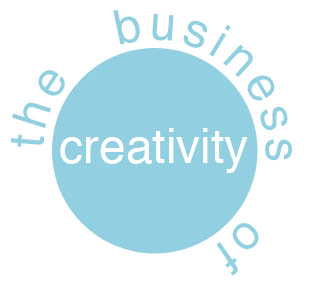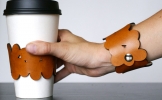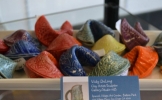Posted by Jennifer Rapp Peterson
 Uncovering your brand and discovering your audience is a valuable process when starting a new business or growing your current one. Sometimes it happens naturally, other times, it requires a little work.
Uncovering your brand and discovering your audience is a valuable process when starting a new business or growing your current one. Sometimes it happens naturally, other times, it requires a little work.
When I work with artists who are setting up their own websites, they are often befuddled by the word “brand.” To them, brand = Coca Cola, Nike and McDonald’s.
If you are selling something - your words, your works or your service - it’s a business, even if you do it part time. And if it’s a business you need to brand it. In many cases, you’re the brand. Branding creative work is easier than branding large consumer products. You don’t have the constraints of a large target audience, you can be really specific and target an uber tiny niche. But branding your work and you the artist, can be a challenge. Even while writing this, I remember how tough it is to gain a clear perspective with your own stuff.
You just have to start asking simple questions. The who, the what, the how, the why, the when, the where of it all. Those questions will spawn more questions and you are off and running.
It’s All About You
The first step in branding is to define you and your work and how they may inform each other. For me this exercise is always illuminating, especially if I am working in a new medium. For many of us, this process is very personal. You need to identify what you are selling, its value, its market, the personality of a product. For an artist or a craftsperson, this product is often an expression from within or statement to be made.
Always start with the WHO, WHAT, WHERE, WHEN, HOW, WHY questions.
Who are you? Where are you from? What do you do? Do you make stuff out of wood? Do you sew? Do you work in multiple mediums?
When did you start this kind of work? What inspired you? Why do you do it?
Was sewing a hobby because off-the-rack stuff never appealed and the high-end designer stuff was too expensive? Or do you make birdhouses because you wanted one in your backyard and hated the Home Depot models? Or does making fuzzy kitties out of recycled sweaters clear your head? It doesn’t matter why, but it’s valuable to know when streamlining your brand and message.
What is your process? How did you come up with that? What message do you want to convey? How would you describe your work? What is it about you/your work/your BRAND that makes it unique? What have you achieved so far? When are you most productive?
Identify Your Audience
The second step in branding is identifying your audience or "target market" through research & experience. Often, your customers are a lot like you and that is a good place to start. If you’ve been in the business for a while, this might be easier for you. If you are starting out, you'll want answers or really good guesses on these questions.
You have to walk a block or two in your audience’s shoes.
Initial market research can be done by showing your work in a gallery or participating in a local craft market. You may want to hang a shingle in an on-line marketplace.
Start paying attention to the WHO, WHAT, WHERE, WHEN, HOW, WHY with your audience too:
Who buys your work now? What do they buy in general? Where do they live? Are they men or women? How old are they? (Not only are demographics great to capture, but aberrations from your primary demographic are great to note too.)
Where do they shop? What do they read? What music do they like?
Ask an acquaintance or customer to describe your work. What do they see in your work? Does your description match up with theirs?
Why do they buy from you? What particular things do they buy from you?
When do you sell the most? Summer craft shows? Holiday season?
What does your audience want? Where do they want it? Why do they want it? When do they want it? How do they want it?
Answers to these questions will help you define your brand on-line, but it will also show you when, where and what you should sharing and selling on your website, how you price your goods, how and when to run promotions, and further market your brand. It will also assist you in identifying new markets to target.
Don’t Fear the Niche
A single artist with a well-branded web presence can easily target a niche market, but tenfold. Your work may be niche, but you have exposure to this niche anywhere with internet connectivity. Get to know your niche. Knowing it & knowing yourself will pave your way in developing your marketing plan.
So, after you've identified what makes you/your brand special and your audience (target market) unique, you are ready to hone your message in a way your audience understands.
How do you connect the two? So how will you deliver your brand to your target and new targets? And that’s where the real fun begins!




